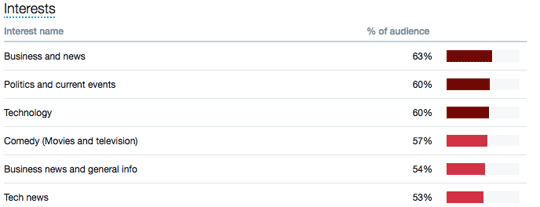The interesting thing about Twitter is that, despite folks often referring to it as a social media platform, Google Play actually categorizes it as a ‘News & Magazine’ app.
This is unlike say Instagram, which Google Play labels under ‘Social.’
So while Twitter is a staple for most B2B social media best practices recommendations, it is by nature a unique beast that mirrors more of a news platform. Unfortunately, many businesses, especially B2B businesses make the big mistake of not understanding this fact.
As a result, these businesses fail in their efforts on Twitter. In this post we look at how they fail in specific terms.
Just Too Self-Absorbed
The first problem with mistaking Twitter for just any social media platform is that businesses will come off as too self-absorbed on the platform.
Remember, the typical reader on Twitter isn’t just there to see what their favorite influencers and brands are up to in their day-to-day, but to get updates.
It could be for what fellow sports fans are saying about that NBA ECF game, a reaction of what just happened on Game of Thrones, or the latest happenings at a marquee tradeshow.
In most cases, the last thing people want to see you toot your own horn and self-aggrandize your business. Your typical Twitter user simply doesn’t care — which is why they’re not following your account, liking your posts, or retweeting your responses.
To get traction, you must contribute something of value to the conversation!
For example, if news breaks of another Equifax-like mass data breach, then IT MSPs could offer short-form analysis, answer questions, highlight key information, and much more.
Don’t Understand Their Readers
For a platform that limits posts to 280 characters (mind you, a 100% increase from the 140 limit it had earlier), you might be surprised at how many insights you can glean from Twitter.
Twitter is absolutely not one-dimensional. Just open up your Twitter account’s audience insights dashboard to understand exactly who you’re trying to engage.
In the chart above, Twitter tells you of your audience’s reading interests, but you can dig deeper for additional information as well, including the following:
- Occupation
- Education
- Gender
- Marital Status
- …and others.
Using that information, you can craft your business’ Twitter messaging, brand voice, and other factors to tightly match with your audience’s preferences, pain points, and aspirations.
In other words, you can make yourself directly relevant to your readers.
If you’re a medical devices company targeting hospital decision-makers, you can use Twitter to tell you what issues interest them, their seniority level, and other information. In turn, you could use those insights to push relevant commentary, stats or responses to those people.
On that vein, you don’t have to universalize every tweet. In other words, you can target specific sub-groups with each specific tweet or response. For example, you could have a set of tweets for mid-level managers and another set for executives. The point isn’t to make everyone see or respond, but every one of the specific people you’re targeting.
You’re re-applying the process of B2B inbound marketing (e.g., building buyer personas), but in a more focused environment in Twitter.
Their Timing Is Off
Finally, as the heading suggests, the timing of the tweets are typically ‘off.’
There are actually two big parts to this:
First, you should develop an understanding of when your target audience is actually active on Twitter. Engaging during their work hours (though it might be at midnight your time) is far more effective than hoping they see a tweet 12 hours after you posted it.
Second, anticipate potential trends. You can use Twitter’s insights dashboard to see upcoming holidays and events, and the expected (or past) level of engagement around them.
You can work for maximum impact by tweeting at the peak of those events, thus increasing your chances of reaching out to more of your target readers.
Leveraging Twitter is a deceptively impactful type of digital marketing strategy. You might not give it much thought in light of the hype of other platforms. However, Twitter is a staple in the world of people wanting information. Take it seriously!
[Images – Main Photo by Vinicius Wiesehofer from Pexels; other images by the author]
Brianna Pyne is a thought leader in the Digital Marketing Industry, one of Brianna’s passions is writing & speaking at conferences. She is currently working with JumpFactor and helps produce content related to content marketing & SEO for B2B businesses.




